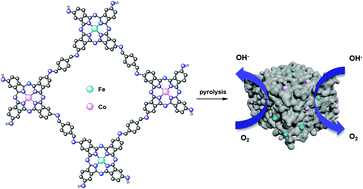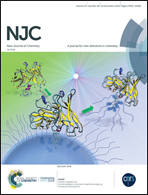An in situ coupling strategy for the preparation of heterometal-doped carbon frameworks as efficient bifunctional ORR/OER electrocatalysts†
Abstract
Exploring cost-effective electrochemical catalysts instead of traditional precious metals for the oxygen reduction reaction (ORR) and oxygen evolution reaction (OER) with outstanding performance plays a vital role in the development of renewable resources. Herein, heterometallic anchored nitrogen-doped carbon materials are fabricated derived from metallophthalocyanine based conjugated microporous polymers (CMPs) consisting of a varying coordinated environment, which hold great promise as competing electrochemical catalyst alternatives due to their intrinsic hierarchical porosity and highly homogenous distribution of catalytic sites. The synergic heterometallic arrangement within the nitrogen-doped carbon framework leads to enhanced catalytic performances in both ORR and OER processes compared with its monometallic counterparts. Benefiting from the engineering strategy and unique structure, the as-prepared heterometallic catalyst presents remarkable ORR/OER bifunctional activity along with desirable long-time durability. The strategy proposed here highlights the potential of heterometallic phthalocyanine as a building block precursor in the rational design of high-efficiency carbon-based ORR/OER bifunctional catalysts.



 Please wait while we load your content...
Please wait while we load your content...